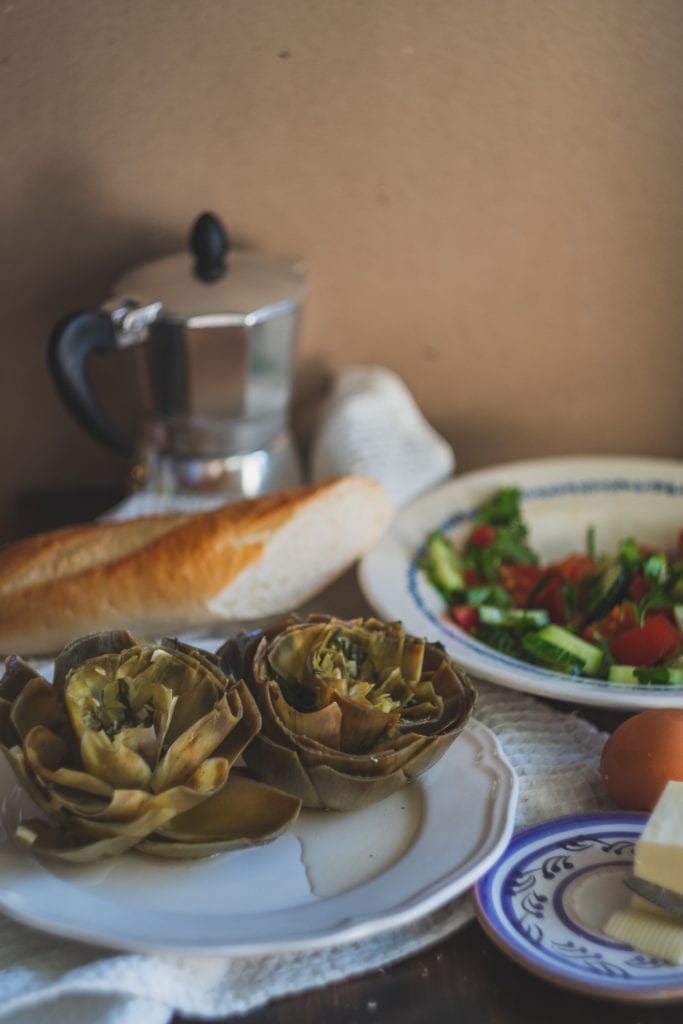You’re all grown up. It’s time to learn how to cook artichokes. This delicious vegetable has a reputation for being difficult to prepare and cook, but it’s not at all. Artichokes are fun to make and enjoy, I love them at dinner parties; it’s easy to linger and fun to visit when your side dish takes half an hour to eat. Plus, the flirting opportunities are many if that’s your thing… They are impressive at parties and kids usually love them, as well.

If you’ve never had fresh artichokes before, they’re a neat and delicious vegetable that’s likely to become one of your favorites. They’re rich in fiber and antioxidants, making them a nutritious addition to any diet. They also contain essential nutrients like vitamin C, iron, and potassium. They’re also nothing like the briny artichoke hearts you get in cans or anything you’ve had in a dip. I learned how to cook artichokes from Martha, here’s the short version.

Here are some tips on how to prepare and cook an artichoke.
- Rinse the whole choke under cold water until clean (or use a brush).
- Cut off the top inch and a half of the artichoke with a large, sharp knife so that it sits flat in the dish. This will help to keep the artichoke from tipping over as you cook it.
- Cut off about 1/2 inch of the top of each remaining leaf with kitchen scissors; trim any dark green parts from the base of each leaf as well. I don’t care what anyone tells you – all these are good for is stock or compost.
- If you like, use a knife to trim any tough parts or woody parts from the stem or remove it completely (I like to leave it for a handle completely intact, I don’t eat them anyway). If you want to peel the stem completely, you can use a peeler.
- Carefully place the artichokes into a couple of inches of simmering water and cover the pan tightly with foil and/or lid.
Place artichoke in simmering water with a garlic clove, lemon slices, bay leaves, and/or peppercorns. Cover the pan and simmer for 40-50 minutes until artichoke leaves can be easily pulled off (internal temperature at base should reach 205 degrees F).
Eat them a leaf at a time until you get to the yummy heart. I like to dip them in Dijon mustard/balsamic vinegar dressing but you can use literally any sauce or dressing you like. Here’s a great collection of artichoke sauces.
Now you know how to cook artichokes, see how easy that was? Enjoy! And if you’re in the mood for asparagus, check out our article on how to cook those here…
